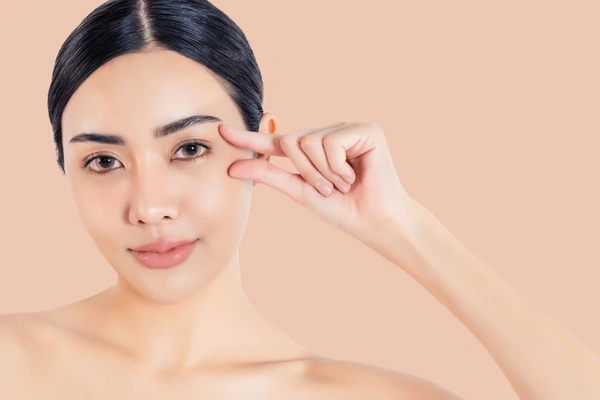Why People Seek Wrinkle Treatments
As people age, collagen production decreases, and skin loses elasticity, leading to fine lines and wrinkles. Common reasons individuals pursue wrinkle treatment include:
- Restoring Youthful Appearance – Smoothing out lines to look refreshed.
- Boosting Confidence – Feeling more comfortable with their appearance.
- Preventative Care – Addressing fine lines early to prevent deeper wrinkles.
- Improving Skin Health – Many wrinkle treatments enhance collagen production and improve skin texture.
Whether it’s to smooth out crow’s feet, forehead lines, or marionette lines, there are effective treatments available to help individuals achieve their aesthetic goals.
Types of Wrinkle Treatments
Wrinkle treatments vary in approach and efficacy, depending on the depth of wrinkles and skin health. Here are some popular options:
- Botox and Dermal Fillers:
- Botox – Targets expression lines by temporarily relaxing facial muscles, effective for crow’s feet, forehead lines, and frown lines.
- Dermal Fillers – Used to restore volume and smooth out deeper wrinkles, often applied to cheeks, nasolabial folds, and marionette lines.
- Laser Treatments:
- Fractional CO2 Laser – Stimulates collagen, resurfaces the skin, and reduces wrinkles and fine lines.
- Erbium Laser – Offers precise skin resurfacing, ideal for fine lines on sensitive areas like under the eyes.
- Chemical Peels – Exfoliate dead skin cells and promote new skin growth, improving skin texture and reducing fine lines.
- Microneedling – A minimally invasive treatment that stimulates collagen and elastin by creating micro-injuries in the skin, effectively reducing fine lines over time.
- Radiofrequency (RF) Treatments – Uses heat energy to stimulate collagen production and tighten the skin, beneficial for deeper wrinkles and skin laxity.
Each option works differently, and consulting with a skin specialist helps to determine the most suitable treatment based on skin type, age, and desired results.
How Does Wrinkle Treatment Work?
Wrinkle treatments work by either relaxing the muscles that cause wrinkles, filling in volume loss, or stimulating collagen production. Here’s a breakdown of each:
- Muscle Relaxation (Botox) – Temporarily inhibits muscle movement to soften expression lines.
- Volume Restoration (Fillers) – Uses hyaluronic acid or other substances to plump up areas that have lost volume.
- Collagen Stimulation (Laser, RF, and Microneedling) – Stimulates the skin’s natural healing process, encouraging collagen production for smoother, firmer skin.
These treatments can often be customised or combined for a more comprehensive approach.
Benefits of Wrinkle Treatment
Wrinkle treatments offer numerous benefits beyond wrinkle reduction:
- Natural-Looking Results – When performed by skilled professionals, these treatments provide a subtle enhancement that looks natural.
- Boosts Collagen Production – Many treatments stimulate collagen, improving skin health and elasticity.
- Quick Results with Minimal Downtime – Non-surgical options like Botox, fillers, and lasers often involve minimal recovery time.
- Long-Lasting Effects – Depending on the treatment, results can last several months to over a year.
Regular treatments can help maintain youthful skin over time, enhancing both appearance and confidence.
Preparing for Your Wrinkle Treatment
Proper preparation is crucial to ensure safety and optimal results:
- Consultation – Schedule a consultation with a qualified provider to discuss your goals and determine the best treatment.
- Avoid Certain Medications – Your doctor may advise you to avoid blood-thinning medications and supplements a week before your treatment.
- Sun Protection – Limit sun exposure before treatment to prevent skin sensitivity.
- Hydration and Skincare – Ensure your skin is well-hydrated and follow any pre-care instructions given by your provider.
Following these steps helps ensure that the skin is in ideal condition for treatment and can speed up recovery.
The Wrinkle Treatment Process - What to Expect
Each wrinkle treatment varies in process and timing. Here’s a general overview:
- Consultation and Skin Assessment – The provider will examine your skin and discuss your goals to create a personalised treatment plan.
- Preparation and Numbing (if necessary) – Some treatments may require a topical numbing cream to ensure comfort.
- Treatment Application – Depending on the type—whether Botox, fillers, lasers, or peels—the procedure time can range from 15 minutes to an hour.
- Post-Treatment Care – Your provider will give specific instructions on aftercare, including sun protection, skincare products, and activity restrictions.
Most treatments are quick with minimal discomfort, making them convenient options for individuals seeking rejuvenation with little interruption to daily life.
Recovery and Aftercare
Each treatment has its unique aftercare steps and recovery timeline. General aftercare includes:
- Avoiding Direct Sun Exposure – UV exposure can hinder healing and affect results, so it’s essential to use sunscreen and avoid prolonged sun exposure.
- Skincare Routine – Use gentle products and avoid exfoliants or harsh ingredients for a few days post-treatment.
- No Makeup – Avoid makeup for at least 24 hours post-treatment to prevent irritation.
- Avoid Strenuous Activities – Strenuous activities may cause swelling; most patients can return to normal activities after 1–2 days.
Results are typically visible within a week for injectables, while laser and microneedling results may take several weeks as collagen production increases. Full results for most treatments continue to improve over time.
Potential Risks and Side Effects
Wrinkle treatments are generally safe when administered by qualified professionals, but risks include:
- Temporary Swelling or Redness – Common and usually subsides within a few hours to days.
- Bruising – Occasionally occurs with injectables like Botox and fillers but fades within a week.
- Sensitivity or Discomfort – May occur post-treatment, especially with peels and lasers.
- Allergic Reaction – Rare but possible, particularly with certain fillers or products.
Discussing any medical conditions and skin sensitivities with your provider can help mitigate these risks.
Wrinkle Treatment Results - What to Expect
Wrinkle treatment results vary by type and individual. Here’s what you can generally expect:
- Quick Results – Fillers and Botox offer almost immediate results, with full effects visible within a week.
- Gradual Improvement – Collagen-stimulating treatments like microneedling and laser therapy offer progressive improvements over several weeks.
- Long-Lasting Effects – With proper skincare and occasional touch-ups, results can last several months to over a year.
Regular maintenance and a healthy lifestyle help prolong the effects of wrinkle treatments, keeping skin looking smooth and refreshed.
Combining Wrinkle Treatments with Other Procedures
For enhanced rejuvenation, many patients opt to combine wrinkle treatments with other cosmetic options:
- Skin Tightening – Procedures like RF or ultrasound therapy complement wrinkle treatments for overall skin firmness.
- Facial Contouring – Fillers can enhance contours along with wrinkle reduction.
- Hydration Boosts – Hydrating facials or injections can enhance skin plumpness, especially in drier skin types.
A combination approach often provides more comprehensive results, allowing for a refreshed, natural-looking appearance.
Is Wrinkle Treatment Right for You?
If you’re looking to reduce the signs of ageing and restore a smooth complexion, wrinkle treatments may be an ideal solution. Consult with a qualified provider to discuss your goals and explore the most effective treatments for your skin type, lifestyle, and preferences.




